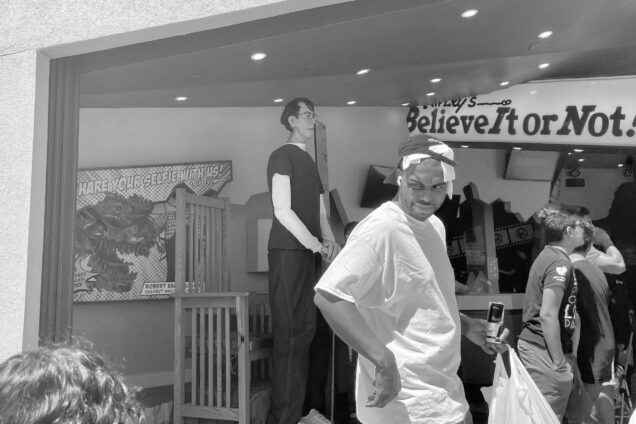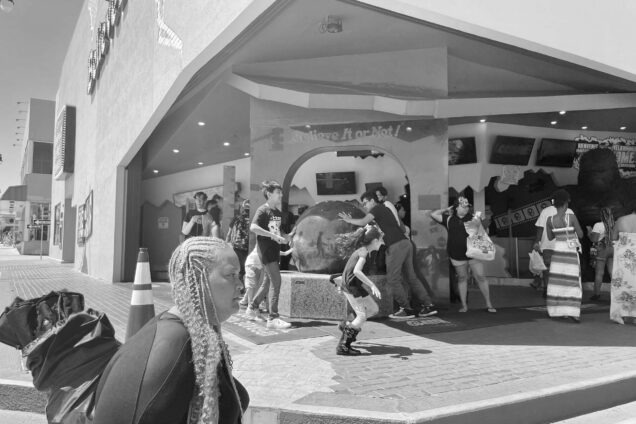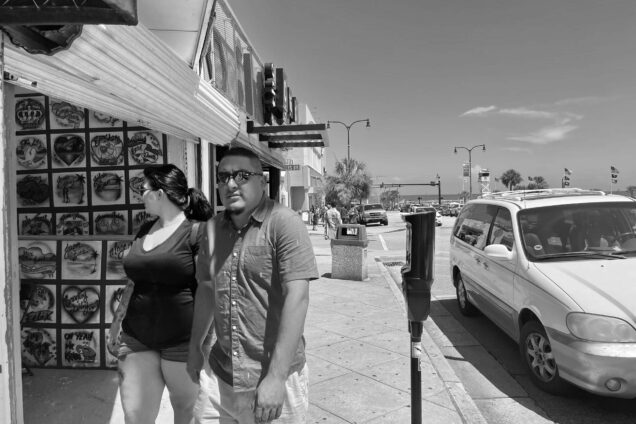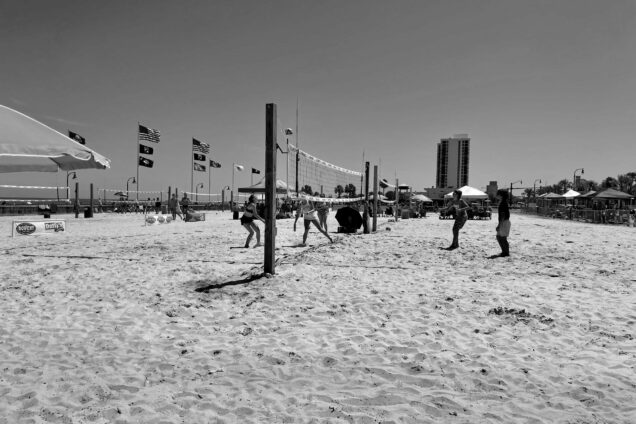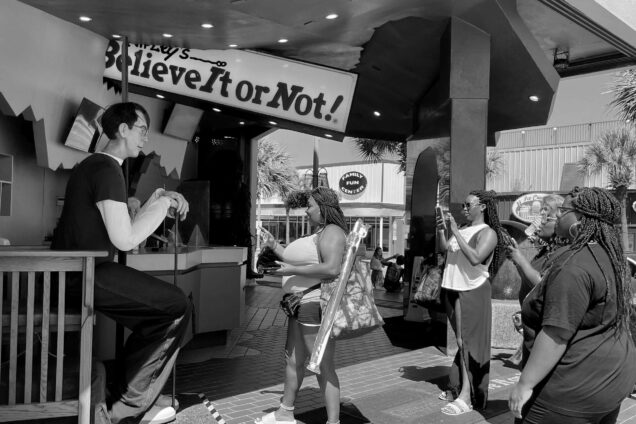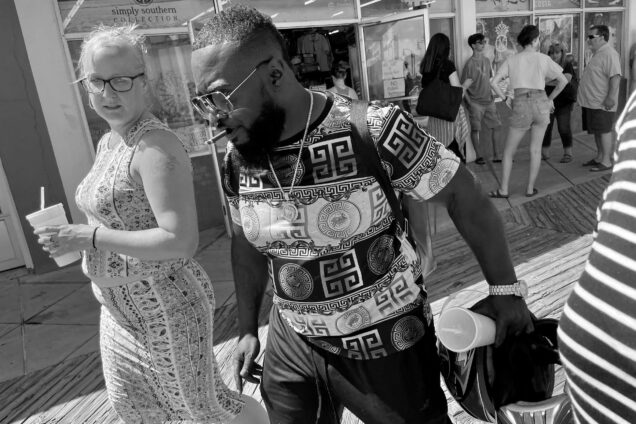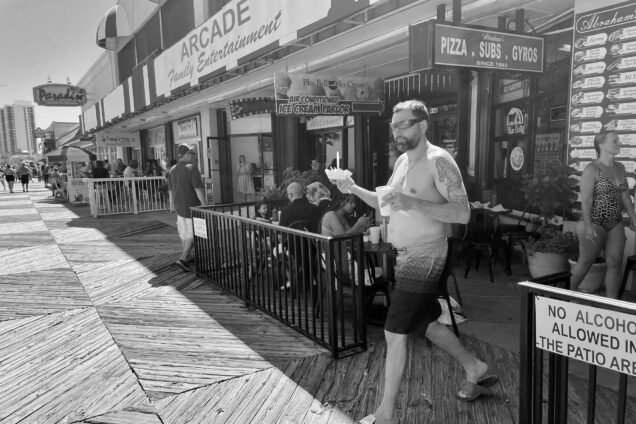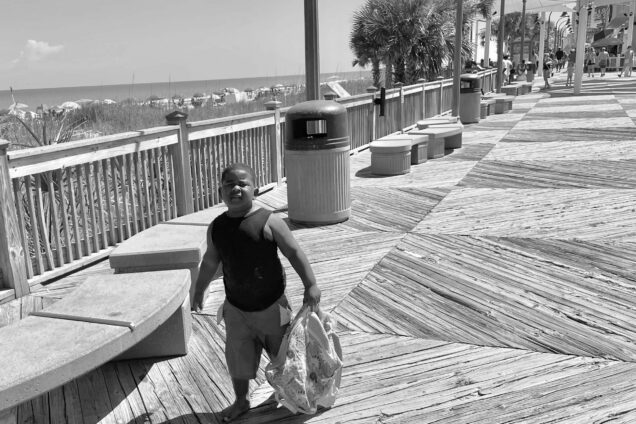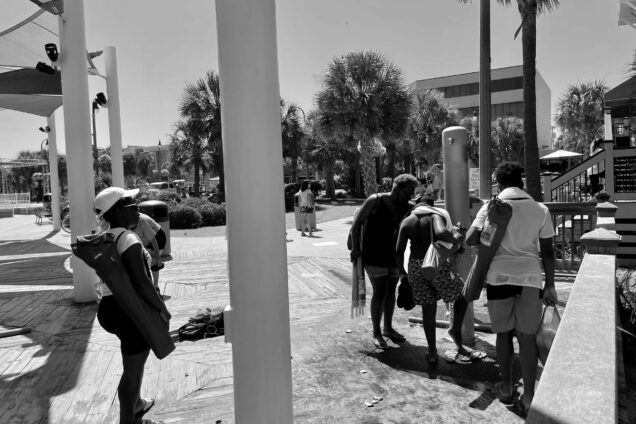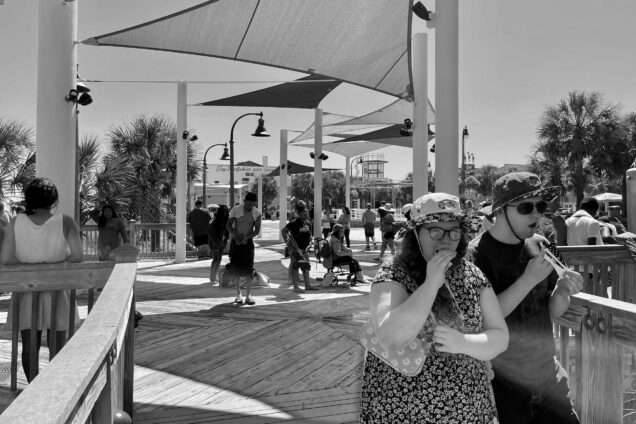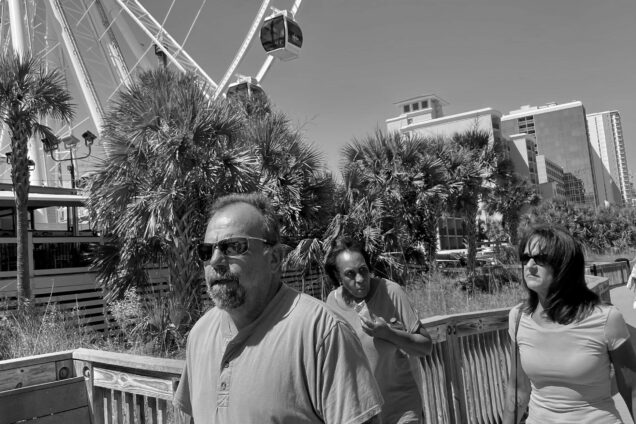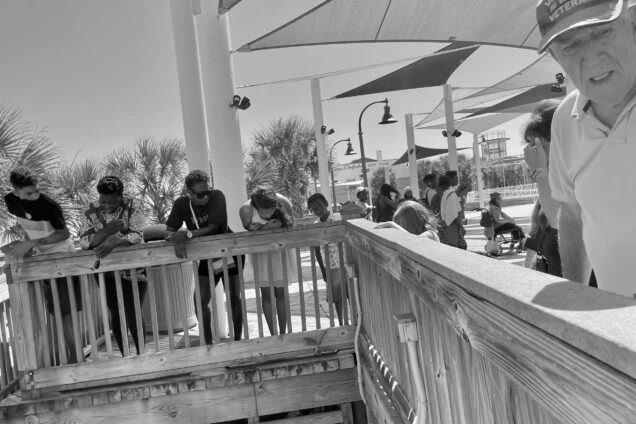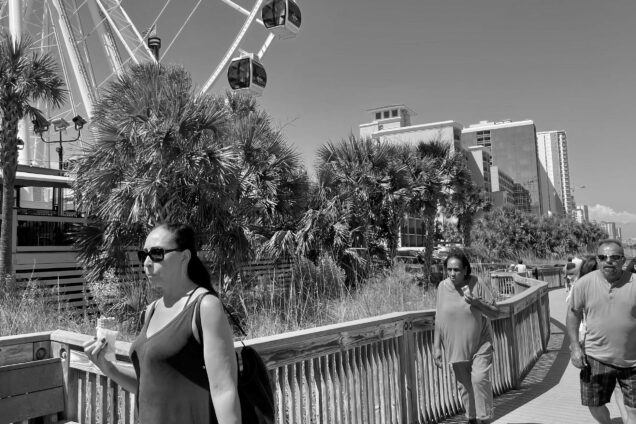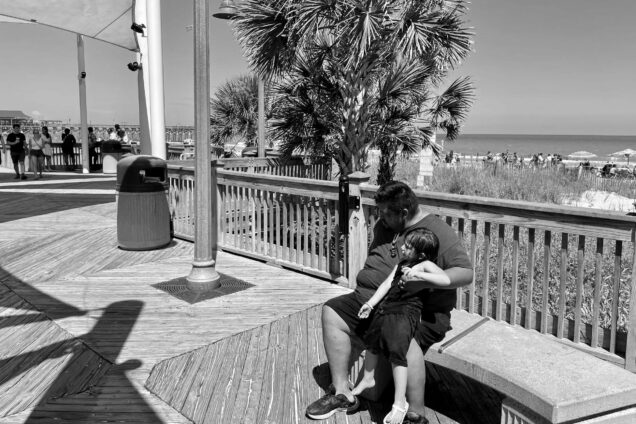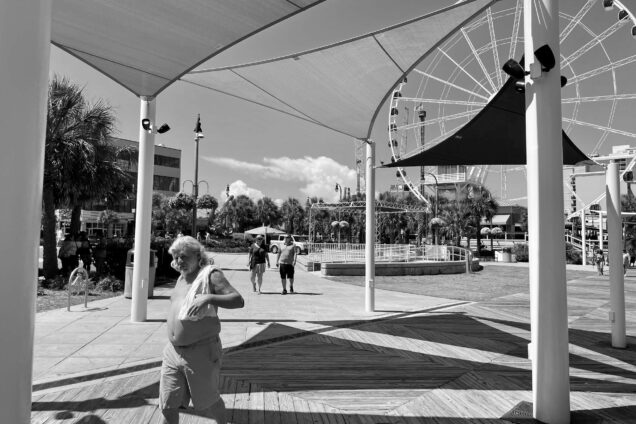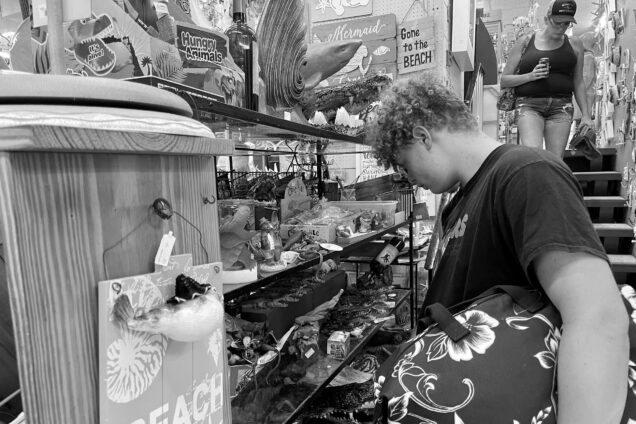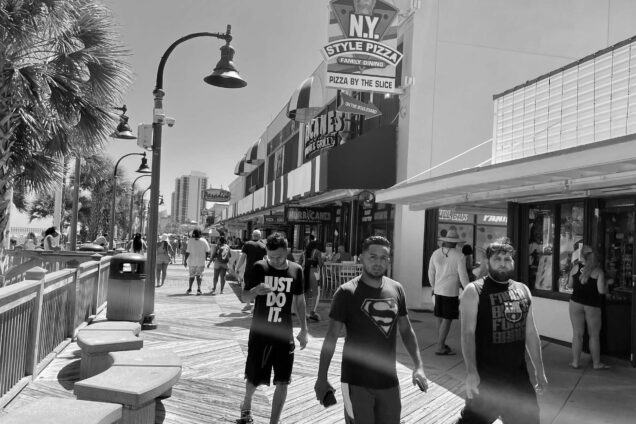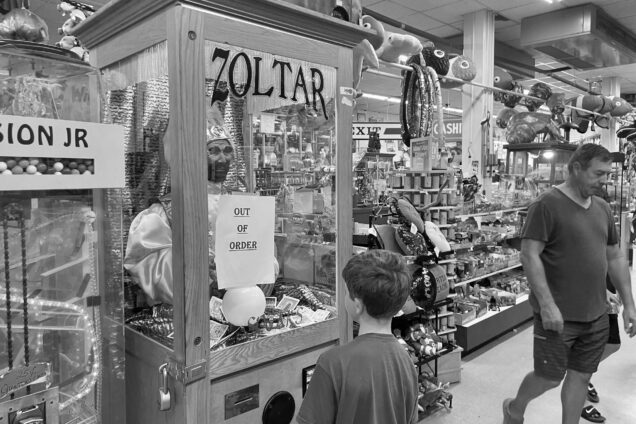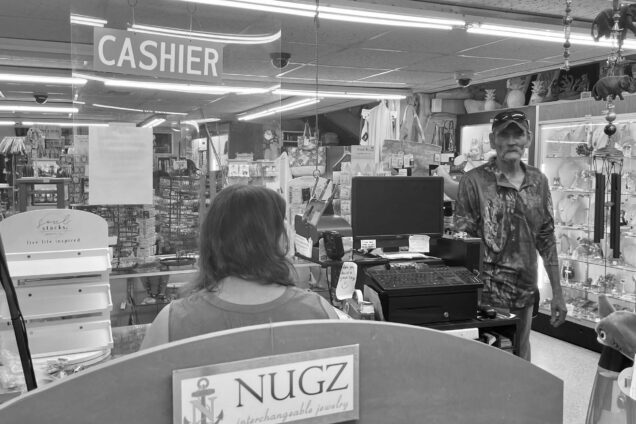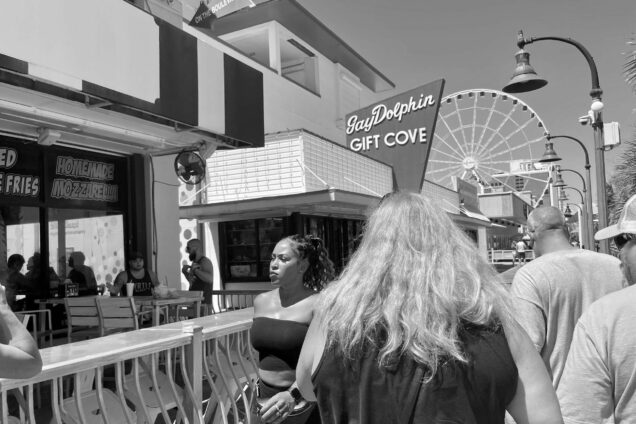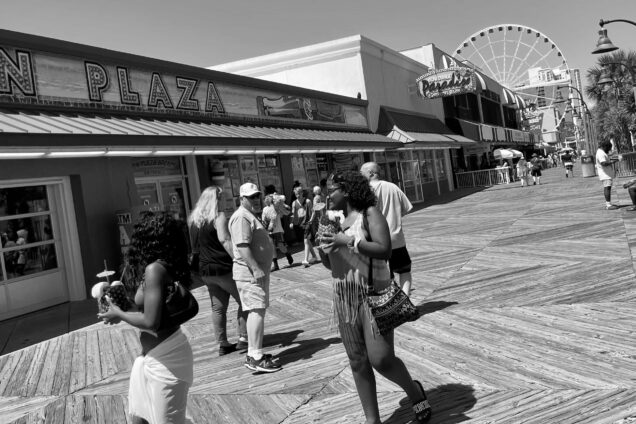Street Photography Influenced by the Artist Garry Winogrand
Colin House
Instructor’s Introduction
These photographs (and the corresponding informal reflection) were occasioned by a creative assignment for WR 151 “Improvisation Now,” a class that was itself an improvised spin-off when a planned class called “The Theater Now” became impossible as theatrical productions closed throughout the city. Colin House’s black and white images speak for themselves—they are dynamic, striking, and demonstrate a natural talent for putting interesting perspectives in the frame in the utterly uncontrived context of street photography—but it is nonetheless interesting to read in his reflection how his research, artistic internship, and writing in the class influenced how he chose to capture this surreal time in our lives, when even the boardwalks of Myrtle Beach are strangely semi-deserted.
Kevin Barents
Street Photography Influenced by the Artist Garry Winogrand
Informal Reflection
While completing my original creation assignment, I had many difficulties trying to find the right setting and technique. I went to a few places around my area to try to photograph people on the street like the famed street photographer Garry Winogrand. In my research and presentation on him, it was found that Winogrand held up his camera at eye level to snap photos in an instant of people with zero hesitation. Something I found hard to do, especially in today’s society, was to be able to do that with an iPhone and not have my subjects get offended or aggravated. What I found though, was that no one ever questioned my intentions of photographing them. In almost all of my pictures people can be seen staring directly at me and into the camera.This makes for great dynamic shots, which often have an ironic tone to them, as they deal with themes of American obesity, wealth divide, and racism. All of this captured in the essence of Garry Winogrand’s style, as opposed to the styles of say Walker Evans or Bruce Gilden.
While looking at the photographs I took, the setting made all the difference. I chose to settle on the location of the Myrtle Beach Boardwalk in South Carolina. This is a location I hold close to my heart as I’ve lived in this area every summer since I was a child. Throughout my brief history with Myrtle, I’ve seen it change drastically before my eyes, a change that has been amplified even higher with the effects of the COVID-19 pandemic. This area of South Carolina depends on tourism, specifically from the Fourth of July weekend, which generates so much money that it can sustain the city for the entire fiscal year. And without that revenue from 2020 due to COVID, Myrtle suffered tremendous monetary cutbacks. In my photos it can be seen that, not only is nobody wearing a mask, but there is a huge drop in the density of people who would normally be here on vacation. Therefore, it can be inferred that the subjects in the photos are “locals” to the immediate and surrounding area of the American South. Despite COVID “never happening” in areas like Myrtle, it is still diseased with racism, bad nutrition, and misinformation. My observations make me want to investigate how the American South has traditionally been less educated, more segregated, less funded, and more ignored in history, and how these attributes have led to the region we know of today.
In any case, when reflecting on my original creation for this assignment I found that the pictures I so quickly captured in an essence of anxiety have brought me more insight and deeper thought regarding the setting I live in. Through the help of famed photographer Garry Winogrand, I got the unique perspective and opportunity to document how life surrounding me can be ironic, playful, and deceitful when paying more attention to just the figures who pass by.
Colin House is a rising senior in Boston University’s College of Arts and Sciences pursuing the architectural studies major and double minoring in urban studies and visual arts. While taking WR120 with Professor Barents in Summer 2021, he thoroughly enjoyed discovering that improvisation can happen outside of the theater and found the joy of street photography as a creative outlet while taking online classes. Throughout WR120, he researched various historic street photographers and found Gary Winogrand’s quick, impulsive and documentative style to resonate with him most. With “Street Photography Influenced by the Artist Garry Winogrand,” Colin hopes to convey the chaos of contemporary American life during COVID in the similarly chaotic style of Winogrand. He would like to thank his fantastic professor Kevin Barents for one of the most engaging and influential classes he has taken and for the opportunity to explore a variety of unconventional solutions while answering what improvisation means to him.
